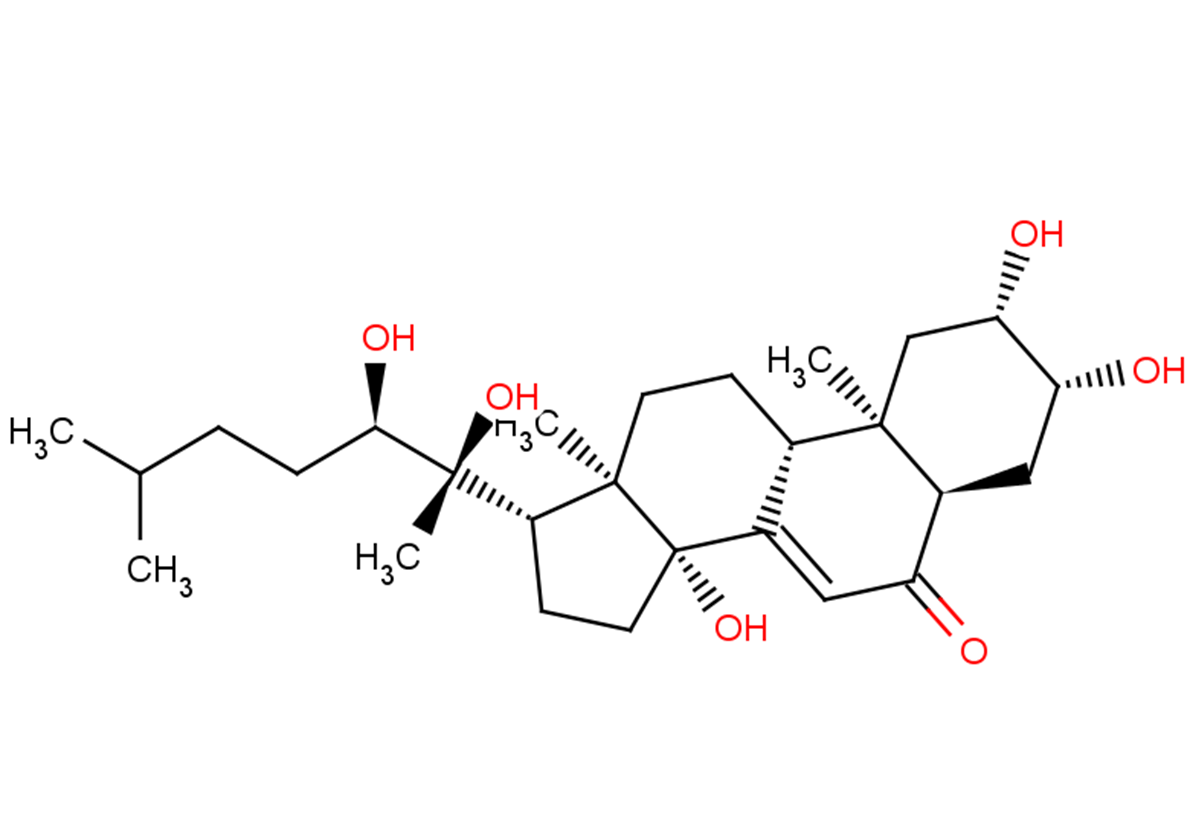
Ponasterone A
CAS No. 13408-56-5
Ponasterone A( Ponasterone A )
Catalog No. M23498 CAS No. 13408-56-5
Ponasterone A is an analog of 20-hydroxy ecdysone.
Purity : >98% (HPLC)
 COA
COA
 Datasheet
Datasheet
 HNMR
HNMR
 HPLC
HPLC
 MSDS
MSDS
 Handing Instructions
Handing Instructions
| Size | Price / USD | Stock | Quantity |
| 5MG | 232 | In Stock |


|
| 10MG | 350 | In Stock |


|
| 25MG | 630 | In Stock |


|
| 100MG | Get Quote | In Stock |


|
| 200MG | Get Quote | In Stock |


|
| 500MG | Get Quote | In Stock |


|
| 1G | Get Quote | In Stock |


|
Biological Information
-
Product NamePonasterone A
-
NoteResearch use only, not for human use.
-
Brief DescriptionPonasterone A is an analog of 20-hydroxy ecdysone.
-
DescriptionPonasterone A is an analog of 20-hydroxy ecdysone. Ecdysone has been used to induce mammalian expression systems.
-
In Vitro——
-
In Vivo——
-
SynonymsPonasterone A
-
PathwayOthers
-
TargetOther Targets
-
RecptorOthers
-
Research Area——
-
Indication——
Chemical Information
-
CAS Number13408-56-5
-
Formula Weight464.63
-
Molecular FormulaC27H44O6
-
Purity>98% (HPLC)
-
SolubilityDMSO:Soluble
-
SMILESCC(C)CC[C@H]([C@@](C)([C@@H](CC1)[C@@](C)(CC[C@H]([C@@](C)(C[C@@H]2O)[C@H]3C[C@H]2O)C2=CC3=O)[C@]12O)O)O
-
Chemical Name——
Shipping & Storage Information
-
Storage(-20℃)
-
ShippingWith Ice Pack
-
Stability≥ 2 years
Reference
1.Kine H , Johan I , Eirin G , et al. Ponasterone A and F, Ecdysteroids from the Arctic Bryozoan Alcyonidium gelatinosum[J]. Molecules, 2018, 23(6):1481-.
molnova catalog



related products
-
P61 (343 - 355), M. ...
P61 (343 - 355), M. leprae
-
NMS-859
NMS-859 is an effective and covalent inhibitor of valosin-containing protein (VCP)/p97 with IC50s of 0.37 μM and 0.36 μM for wild-type VCP in the presence of 60 μM and 1 mM ATP in cells, respectively.
-
1-Methyl-2-undecylqu...
1-Methyl-2-undecyl-4(1H)-quinolone, and dihydroevocarpine should also be served as the chemical markers together with evodiamine for the quality control of Evodia rutaecarpa (Juss.) Benth.



 Cart
Cart
 sales@molnova.com
sales@molnova.com


